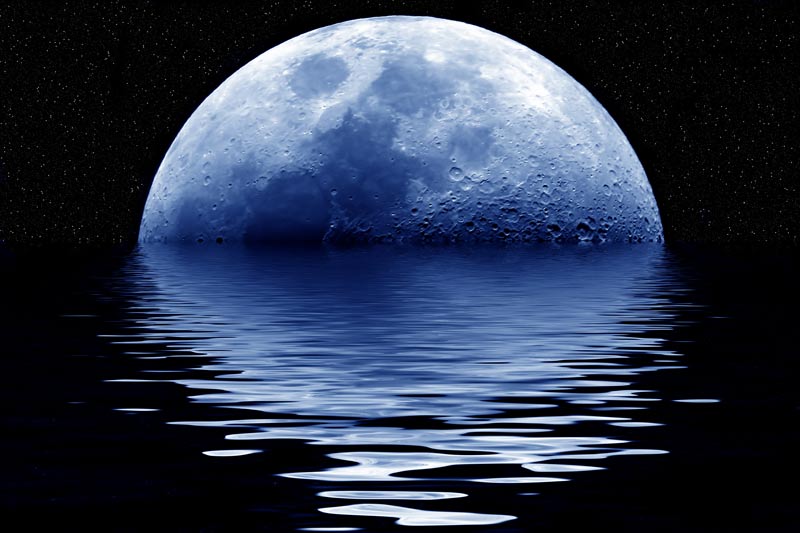
A blue moon is the second full moon that occurs in a month. The moon’s phases take about 29 days to go from new moon and back again. This creates 13 lunar months. Since we have 12 calendar months, there are always two full moons in one month.
A blue moon isn’t actually blue. In fact, the term was used in folklore to just describe something rare and absurd. A second full moon is pretty rare to see because it only occurs once about every 32 months.
In 1946, amateur astronomer James Pruett wrote in Sky & Telescope magazine that “blue moon” was used in the Maine Farmers Almanac to refer to the third full moon in a season that had four of them. Typically, there are only three full moons in a season. The error led to the widely accepted definition of blue moon being the second full moon in a month. [The Blue Moon and Full Moon of 2012 (Photos)]
So what color is the blue moon? It can be yellowish, red or even have a tinge of blue. Smoke and ash from a large forest fire or volcanic eruption creates clouds of particles that are wider than 0.7 micrometers. When clouds of these particles are present, and very little of other sizes, they tend to scatter blue light making the moon appear blue.
Sign up for the Live Science daily newsletter now
Get the world’s most fascinating discoveries delivered straight to your inbox.










